I went on a little adventure with my daughter, her friend, my dog and my lover. This cool little adventure took us under roads, through the forest, over creeks, up a mountain, through the snow and into dark tunnels. During this adventure we encountered many obstacles like ice, boulders, fences and downed trees, etc…. This definitely made for some interesting moments that left us on our butts or trying to figure out a way around the hurdle. Each time we fell on the ice we picked ourselves back up, each time we hit a bump or barrier along our path, we figured out a safe way around and/or through. No matter what, we kept going because we knew whatever was around the next corner it was sure to be interesting and beautiful…and it was! It was a great day!
When I came home and reflected on my awesome day it reminded me that my nature infused adventures are similar to my business building experience. While the backdrop is very different the feelings, the emotions and mentality of it was similar.
7 reasons why a hike in nature is similar to starting your own business!
- Preparing:
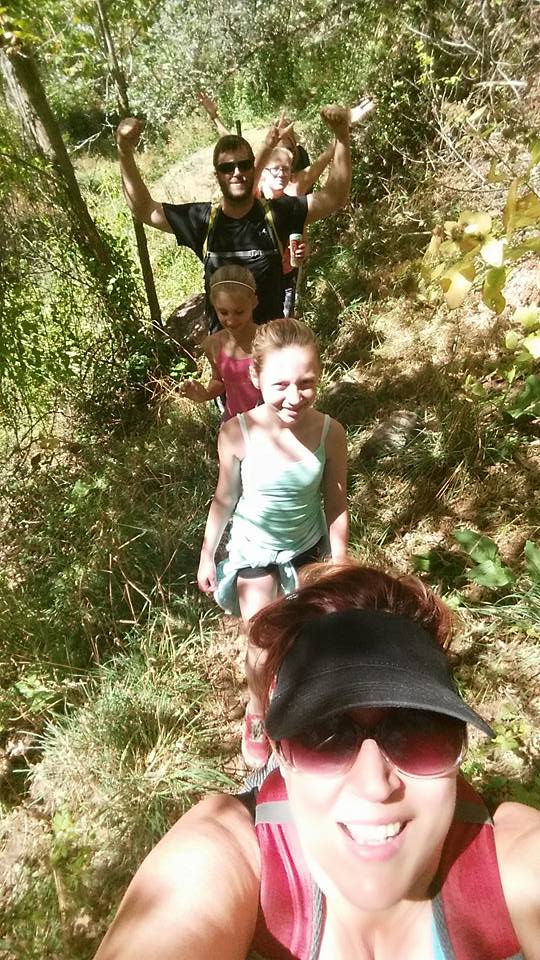 When starting any new adventure you always have some sort of destination in mind. Preparation is a key component to your journey. For instance, when you go on a day hike you need to be sure to have all the necessities, like water, snacks, proper attire and a fairly clear idea what your route will look like and what your time frame will be.
When starting any new adventure you always have some sort of destination in mind. Preparation is a key component to your journey. For instance, when you go on a day hike you need to be sure to have all the necessities, like water, snacks, proper attire and a fairly clear idea what your route will look like and what your time frame will be.
Building your business is quite similar. You need to have an idea, a business plan, a blueprint and the right tools to help you get to your goal in the timeframe you desire. Evaluate your goals; understand what it takes to start a business not only from a financial stand point, but also from an emotional, mental and physical stand point as well. There is so much heart and soul you will pour into your business and being as prepared as possible is truly in your best interest. Furthermore, educate yourself on the legalities of starting your own business and seek legal and financial consultation should you need it. Sometimes it is easier to work with a professional that can tell you right away the answers you seek, rather than spending weeks trying to figure it out on your own.
- Getting Started:

A journey of a thousand miles (or even just 2 miles) starts with a single step. Building your business is like starting a hike. When you arrive at the trail head you know that there will be many miles between you and your destination. Excitement and sometimes fear will be an emotion you will feel as you embark on the path to your destination. A hike, depending on your level of fitness and how steep the climb is, you will stop to catch your breath or stop to rest your legs.
Your business is no different. You will meet goals, stop to catch your breath, regroup and then keep going. If you are unsure where to start with your business I suggest that you start by carving out time each and every day to work on your business. This can be as simple as doing research on the internet, reading blogs, finding a community online to bounce ideas off of, or seek mentorship and coaching. I also suggest that you invest in this journey and if you are someone that can learn online, purchase a training course that will help you get started. This is nice because it can save you time and also take a lot of guess work out of it for you. Your time is precious, so be sure to seek help where help in needed! Your family and friends will appreciate this too.
- Finding Your Buddies and Support System:
 Not only is it fun, but it is also super smart to never hike alone. Hiking with friends or family is an enjoyable experience and can help keep you safe. In nature there are many things that could go wrong. Wildlife encounters, inclement weather and even the risk of injury. So having a buddy can lessen the burden should something negative happen. Plus on the fun side, you will build memories together; you can share stories and most importantly someone to encourage you should you feel too tired or weak to keep going.
Not only is it fun, but it is also super smart to never hike alone. Hiking with friends or family is an enjoyable experience and can help keep you safe. In nature there are many things that could go wrong. Wildlife encounters, inclement weather and even the risk of injury. So having a buddy can lessen the burden should something negative happen. Plus on the fun side, you will build memories together; you can share stories and most importantly someone to encourage you should you feel too tired or weak to keep going.
Here is a little secret, your support system when you are building your business is one of the secret sauces to your success. I can’t express how much you need to have your support system in place when you decide to embark on this epic entrepreneurial journey. Your support system is the people that will pick you up when you have fallen; these are the people who will cheer you on when you feel like giving up. These are the people who will gather around you to celebrate your goals when you have accomplished them. Business is hard, it can be a lonely place with lots of hurdles along the way, but with a support system by your side anything can be possible.
- Being Prepared to Weather Any Storm:
 In the mountains of Colorado (where I live) the weather can change in a matter of minutes. It can be sunny and beautiful, then within an hour it could be thunder snowing. You have to be prepared to weather any storm in the mountains. So, as you embark on this epic metaphorical hike of building your business you should remember that the seasons of success will change.
In the mountains of Colorado (where I live) the weather can change in a matter of minutes. It can be sunny and beautiful, then within an hour it could be thunder snowing. You have to be prepared to weather any storm in the mountains. So, as you embark on this epic metaphorical hike of building your business you should remember that the seasons of success will change.
What does seasons of success mean? As counter intuitive as it may sound, success is temporary! But so is failure. As a veteran online business owner that has helped thousands of businesses build their online presence, I have weathered many storms along the way. Every time I feel defeated or elated, I center myself and understand that it is only a temporary feeling.
I share this not to deter you, but rather to prepare you. Success is a crazy rollercoaster and truly is not for the faint of heart. Tenacity pays off. Consistency pays off. Failure pays off. One day you may feel like giving up, another day you may feel like you’re the master of your universe. Don’t give up; remember the seasons of success will change and every great leader in all industries have experienced it. Remember the master once was the beginner… trust your journey!
- Embracing and Enjoying the Journey:
 Nobody said it was going to be easy…they said it would be worth it. Let it be a mountain in front of you or starting your business building journey, one thing is for certain, it will surely be an interesting adventure and journey.
Nobody said it was going to be easy…they said it would be worth it. Let it be a mountain in front of you or starting your business building journey, one thing is for certain, it will surely be an interesting adventure and journey.
In the fast paced world that we live in we tend to focus on what we lack or do not have, rather than celebrating the things we do. There will be many days you will find yourself focusing how far you have to go or what you have not accomplished yet. You may beat yourself up about the training you still need, or how your website may not operate perfectly or that you don’t have enough social media followers. It is so easy to focus your energy on what you haven’t done that you forget to embrace exactly where you are right now.
The entire journey is worth embracing, everything from the trials and errors, to the huge accomplishments along the way. Each step you take and each twist and turn or achievement that you encounter on this path is put there to either help you grow, help you learn or help you put everything into perspective. Success is by no means a straight line, but rather full of turns, bumps, sharp curves and more. Allowing yourself to embrace its every last drop, is a true gift you can give to yourself, but to say that it comes easy would be a lie, but oh so worth it!
- Celebrating Along the Way:
 What is all the hard work without reward? For some the hike to the summit is the reward that they feel is enough, the breathtaking views, the sense of accomplishment, the burn in their calves. Or maybe you have plans to get an amazing meal or a big tasty beer as soon as you return back to town. I remember, I did a huge and brutal 15 mile hike a few years back and I knew that my reward was going to be a gigantic class of ice water when I returned to town. When I got it I was in heaven and cherished every last cold delicious gulp.
What is all the hard work without reward? For some the hike to the summit is the reward that they feel is enough, the breathtaking views, the sense of accomplishment, the burn in their calves. Or maybe you have plans to get an amazing meal or a big tasty beer as soon as you return back to town. I remember, I did a huge and brutal 15 mile hike a few years back and I knew that my reward was going to be a gigantic class of ice water when I returned to town. When I got it I was in heaven and cherished every last cold delicious gulp.
It is no different with your business. Celebrate the big wins of course, but also celebrate the small wins too. All those small wins are just as important as that big goal that you accomplished. There is no way you can achieve a huge leap without a series of steps before it (unless you’re super(wo)man). Those steps are just as important as that moment you jump. Those steps before the leap should be celebrated just as much as the leap itself, because they were a huge reason you were able to make the leap to begin with.
With this same metaphor in mind, remember to celebrate all the steps that occur before whatever the big goal is that you plan to celebrate. I think the best advice one of my mentors ever gave me was “Until further notice celebrate everything!” So I give you the same sage advice… and to take it one step further, find something to celebrate every day. It could be you finished a blog you had been working on, or that you got 20 new likes on your Facebook business page, or you actually ate breakfast, or that you got to the gym before you started the day, whatever it might be, celebrate it in your own unique and happy way. Your mind, body, spirit and your family will thank you for it.
- Sharing your Adventure:
 I know when I finish a hike, just like I did at the beginning of this blog, I looked forward to sharing it on my facebook and instagram pages with my family and friends. How lucky are we that we live in a time that we can do this with a few clicks of a mouse. With the magic of social media it is so much easier to share precious and adventurous moments.
I know when I finish a hike, just like I did at the beginning of this blog, I looked forward to sharing it on my facebook and instagram pages with my family and friends. How lucky are we that we live in a time that we can do this with a few clicks of a mouse. With the magic of social media it is so much easier to share precious and adventurous moments.
The same mindset should be applied for your business building journey too. Let it all hang out, the good, the bad, and the ugly. Honestly, when I am looking for inspiration in terms of business or my fitness goals, I never want to be shown the sweet and cute parts. I want to relate, I want to connect and have someone tell me “Yes! It is freaking hard sometimes, but keep going”. When you share your business building experience you have the ability to inspire others that maybe feel defeated or just needed a reminder. I promise your adventure will inspire someone else. There is always someone waiting to hear from you…even if they don’t know it yet.
In closing, remember business is very much like an adventure…where it leads us, we aren’t quite sure, but one thing we know it will be worth it. I highly suggest following your Entrepreneurial spirit down that rabbit hole… What you will find will be one of the best adventures of your life.
Remember, the master always started out as a beginner. One foot in front of the other…baby steps! Your story is bound to inspire someone and I hope that my story has inspired you too. Pass it on.
#Entrepreneur #OnlineBusiness
 Decide what you want. Consider what you want to achieve. Set S.M.A.R.T goals that motivate you and write them down to make them feel tangible. By setting Specific, Measurable, Attainable, Relevant and Time-bound goals you can measure and take pride in the achievement of those goals. You will be able to see the forward progress in what might otherwise feel like a long pointless grind.
Decide what you want. Consider what you want to achieve. Set S.M.A.R.T goals that motivate you and write them down to make them feel tangible. By setting Specific, Measurable, Attainable, Relevant and Time-bound goals you can measure and take pride in the achievement of those goals. You will be able to see the forward progress in what might otherwise feel like a long pointless grind. Doing things carelessly is the mother of everything that can go wrong. When you want your project to succeed, you invest yourself in it fully. “The difference between ‘involvement’ and ‘commitment’ is like an eggs-and-ham breakfast: the chicken was ‘involved’ – the pig was ‘committed’.” You can’t afford to only be involved; being involved means you’re not committed enough, and if you’re not committed enough, that thing you’ve been working on, won’t see the light of day. Don’t chicken out.
Doing things carelessly is the mother of everything that can go wrong. When you want your project to succeed, you invest yourself in it fully. “The difference between ‘involvement’ and ‘commitment’ is like an eggs-and-ham breakfast: the chicken was ‘involved’ – the pig was ‘committed’.” You can’t afford to only be involved; being involved means you’re not committed enough, and if you’re not committed enough, that thing you’ve been working on, won’t see the light of day. Don’t chicken out.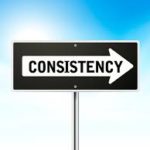 Be determined and most important, consistent. Fully dedicate yourself to your goal. Consistency is about building small empowering habits and rituals that you partake in every single day that keep you focused on your highest priorities and goals. It essentially comes down to your ability to hold yourself accountable for the daily choices you make, with no excuses and no complaints. You and you alone are accountable for what you do and what you fail to do. All responsibility lies solely in your hands. Do the work not for an hour, a day, a week or a month…but every day, every step, until you reach your goal.
Be determined and most important, consistent. Fully dedicate yourself to your goal. Consistency is about building small empowering habits and rituals that you partake in every single day that keep you focused on your highest priorities and goals. It essentially comes down to your ability to hold yourself accountable for the daily choices you make, with no excuses and no complaints. You and you alone are accountable for what you do and what you fail to do. All responsibility lies solely in your hands. Do the work not for an hour, a day, a week or a month…but every day, every step, until you reach your goal.

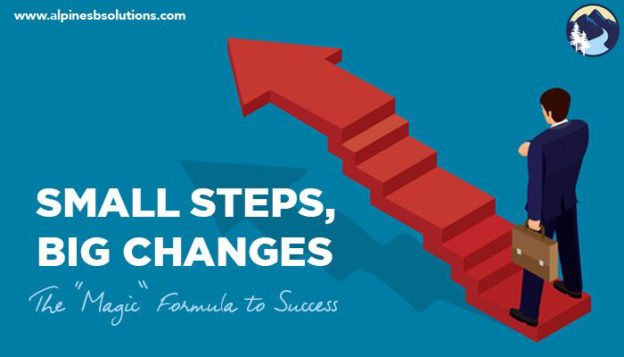
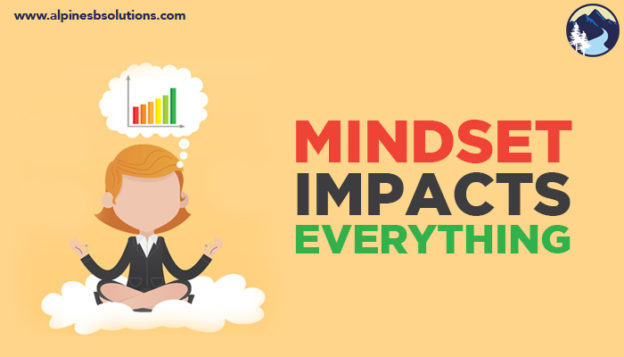
 Growth Mindset
Growth Mindset Fixed Mindset
Fixed Mindset Whether you’re aware of it or not, you keep a running account of what’s happening, what it means, and what you should so. Our minds are constantly monitoring and interpreting. That’s just how we stay on track. Mindset frames the running account of what is taking place. It guides the whole interpretation process.
Whether you’re aware of it or not, you keep a running account of what’s happening, what it means, and what you should so. Our minds are constantly monitoring and interpreting. That’s just how we stay on track. Mindset frames the running account of what is taking place. It guides the whole interpretation process.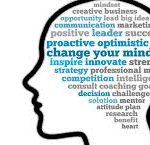 Changing from a fixed mindset to a growth mindset is not like surgery; you can’t remove a fixed mindset and replace it with a growth mindset. You must work on nurturing a positive, growth mindset. These are tips from
Changing from a fixed mindset to a growth mindset is not like surgery; you can’t remove a fixed mindset and replace it with a growth mindset. You must work on nurturing a positive, growth mindset. These are tips from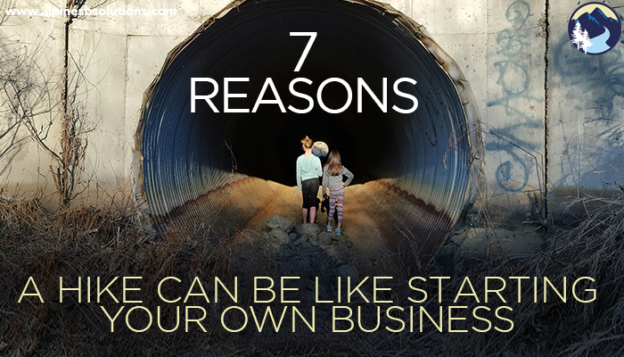
 When starting any new adventure you always have some sort of destination in mind.
When starting any new adventure you always have some sort of destination in mind. 
 Not only is it fun, but it is also super smart to never hike alone. Hiking with friends or family is an enjoyable experience and can help keep you safe. In nature there are many things that could go wrong. Wildlife encounters, inclement weather and even the risk of injury. So having a buddy can lessen the burden should something negative happen. Plus on the fun side, you will build memories together; you can share stories and most importantly someone to encourage you should you feel too tired or weak to keep going.
Not only is it fun, but it is also super smart to never hike alone. Hiking with friends or family is an enjoyable experience and can help keep you safe. In nature there are many things that could go wrong. Wildlife encounters, inclement weather and even the risk of injury. So having a buddy can lessen the burden should something negative happen. Plus on the fun side, you will build memories together; you can share stories and most importantly someone to encourage you should you feel too tired or weak to keep going. In the mountains of Colorado (where I live) the weather can change in a matter of minutes. It can be sunny and beautiful, then within an hour it could be thunder snowing. You have to be prepared to weather any storm in the mountains. So, as you embark on this epic metaphorical hike of
In the mountains of Colorado (where I live) the weather can change in a matter of minutes. It can be sunny and beautiful, then within an hour it could be thunder snowing. You have to be prepared to weather any storm in the mountains. So, as you embark on this epic metaphorical hike of  Nobody said it was going to be easy…they said it would be worth it. Let it be a mountain in front of you or starting your business building journey, one thing is for certain, it will surely be an
Nobody said it was going to be easy…they said it would be worth it. Let it be a mountain in front of you or starting your business building journey, one thing is for certain, it will surely be an  What is all the hard work without reward? For some the hike to the summit is the reward that they feel is enough, the breathtaking views, the sense of accomplishment, the
What is all the hard work without reward? For some the hike to the summit is the reward that they feel is enough, the breathtaking views, the sense of accomplishment, the  I know when I finish a hike, just like I did at the beginning of this blog, I looked forward to sharing it on my
I know when I finish a hike, just like I did at the beginning of this blog, I looked forward to sharing it on my 
 Sure, you want as many
Sure, you want as many  Joining an already established group opens you up to getting your organization’s name seen by new contacts, such as leaders in your industry or potential new customers. You can showcase your value to these individuals by answering questions with your expertise or sharing valuable content from your website. Consistent
Joining an already established group opens you up to getting your organization’s name seen by new contacts, such as leaders in your industry or potential new customers. You can showcase your value to these individuals by answering questions with your expertise or sharing valuable content from your website. Consistent  Measurement of group involvement can be done through a variety of ways, including
Measurement of group involvement can be done through a variety of ways, including 
 Imposter syndrome is a term often thrown around and splashed in click baiting headlines, leaving people confused as to what it actually is (and whether they’re affected by it).
Imposter syndrome is a term often thrown around and splashed in click baiting headlines, leaving people confused as to what it actually is (and whether they’re affected by it). Imposter syndrome is the little troll on our shoulder feeding us lies about our potential. It keeps us from being the best
Imposter syndrome is the little troll on our shoulder feeding us lies about our potential. It keeps us from being the best  It’s okay to celebrate and take pride in your success. In fact, it’s important for your confidence’s sake to view your success accurately. (That means recognizing the role your ability and
It’s okay to celebrate and take pride in your success. In fact, it’s important for your confidence’s sake to view your success accurately. (That means recognizing the role your ability and  a list of more achievements to feel more confident. But, the problem with imposter syndrome isn’t a lack of success (since it happens with people who are very successful). It’s not being able to internalize accurately those successes. Imposter syndrome won’t go away with more success.
a list of more achievements to feel more confident. But, the problem with imposter syndrome isn’t a lack of success (since it happens with people who are very successful). It’s not being able to internalize accurately those successes. Imposter syndrome won’t go away with more success.
 A sales funnel is an analogy used to explain how the sales process works. It serves as a visual representation of how an individual moves from knowing nothing about your organization to becoming a loyal customer and hopefully brand evangelist for you. The mindset of a sales funnel views sales as a proactive process of making customers (as opposed to the more passive process of finding customers). The underlying goal of the sales funnel is to convert those who are unaware of your organization to happy customers by finding as many
A sales funnel is an analogy used to explain how the sales process works. It serves as a visual representation of how an individual moves from knowing nothing about your organization to becoming a loyal customer and hopefully brand evangelist for you. The mindset of a sales funnel views sales as a proactive process of making customers (as opposed to the more passive process of finding customers). The underlying goal of the sales funnel is to convert those who are unaware of your organization to happy customers by finding as many  become a customer. In situations where contracts need to be renewed or purchases made again, the customer will enter a re-evaluation phase. In some respects, they become a prospect again since they can now evaluate their other options.
become a customer. In situations where contracts need to be renewed or purchases made again, the customer will enter a re-evaluation phase. In some respects, they become a prospect again since they can now evaluate their other options.  number of individuals at each stage, the percent of customers made from leads, and the average time it takes to move a customer down the funnel. Gathering these metrics provides you with a more holistic method of comparison to gauge successful sales efforts than just sales completed. After enough time using the sales funnel, you’ll be able to see a baseline of what you can expect from your sales team. Deviations from this baseline will show you what works well or what needs to be improved in your sales strategy.
number of individuals at each stage, the percent of customers made from leads, and the average time it takes to move a customer down the funnel. Gathering these metrics provides you with a more holistic method of comparison to gauge successful sales efforts than just sales completed. After enough time using the sales funnel, you’ll be able to see a baseline of what you can expect from your sales team. Deviations from this baseline will show you what works well or what needs to be improved in your sales strategy. the numbers will always be high at every phase. The reality, however, is that the numbers fluctuate often. Using a sales funnel highlights areas that should be targeted to get the numbers to where they need to be for effective customer recruitment. If you see you’re lacking leads, you can put more resources into lead generation. If you see you have enough leads but not enough are becoming prospects or committed, you can put more resources into bettering your pitch. If you see enough customers aren’t returning when contracts need to be renewed, you can put more resources into customer service.
the numbers will always be high at every phase. The reality, however, is that the numbers fluctuate often. Using a sales funnel highlights areas that should be targeted to get the numbers to where they need to be for effective customer recruitment. If you see you’re lacking leads, you can put more resources into lead generation. If you see you have enough leads but not enough are becoming prospects or committed, you can put more resources into bettering your pitch. If you see enough customers aren’t returning when contracts need to be renewed, you can put more resources into customer service.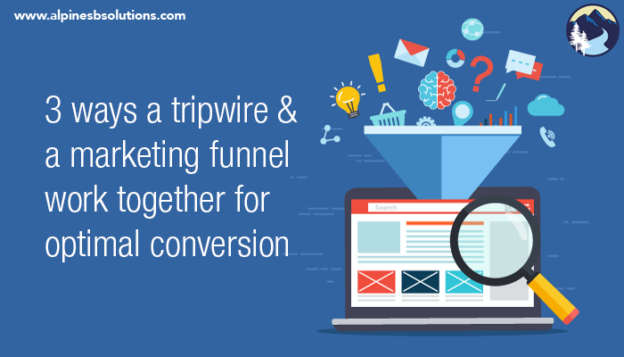
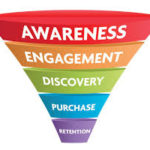 Marketers use tools to nurture leads along each stage of the funnel. Visitors to your site can give their email in exchange for a free downloadable guide (gaining awareness). A follow-up email gives them a curated list of relevant blog articles on the site (gaining interest). A follow-up email to that gives them a case study showing the benefits of your products/services (gaining desire). A follow-up email to that gives them a coupon to buy your products/services (taking action).
Marketers use tools to nurture leads along each stage of the funnel. Visitors to your site can give their email in exchange for a free downloadable guide (gaining awareness). A follow-up email gives them a curated list of relevant blog articles on the site (gaining interest). A follow-up email to that gives them a case study showing the benefits of your products/services (gaining desire). A follow-up email to that gives them a coupon to buy your products/services (taking action). they need to know it exists. Insert the marketing funnel! You can use the marketing funnel to direct people to the end action: acting on the trip wire. Social media, blog posts, emails can all give that push towards buying the trip wire. Not everyone will make it from gaining awareness to making that purchase. But strategic marketing can help get more people to that purchasing point.
they need to know it exists. Insert the marketing funnel! You can use the marketing funnel to direct people to the end action: acting on the trip wire. Social media, blog posts, emails can all give that push towards buying the trip wire. Not everyone will make it from gaining awareness to making that purchase. But strategic marketing can help get more people to that purchasing point.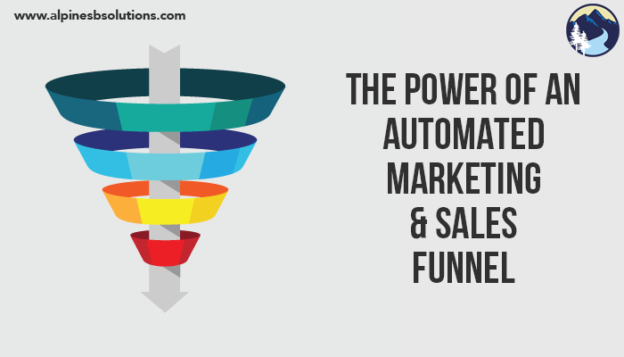
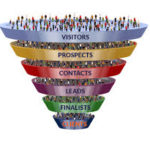 You’ve probably heard this phrase before. Many, many, many times I imagine. Let’s quickly debrief anyway.
You’ve probably heard this phrase before. Many, many, many times I imagine. Let’s quickly debrief anyway. Automation, when done well, can be a marketer’s best friend. First of all, it saves you an immense amount of time. Instead of you sitting down to individually send an email to people at each stage of the funnel, these emails can be sent automatically.
Automation, when done well, can be a marketer’s best friend. First of all, it saves you an immense amount of time. Instead of you sitting down to individually send an email to people at each stage of the funnel, these emails can be sent automatically.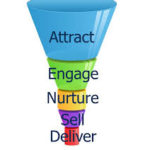 attention (since that “unsubscribe button” is all too easy to press). Send a follow-up email to those who subscribed giving them more helpful information. Nothing sales-y here either! The goal is to intrigue your audience about your brand by showing you know your stuff. Send an email with a round-up of useful articles on the given topic. Share valuable resources. Prove that your emails (and your company) offer value.
attention (since that “unsubscribe button” is all too easy to press). Send a follow-up email to those who subscribed giving them more helpful information. Nothing sales-y here either! The goal is to intrigue your audience about your brand by showing you know your stuff. Send an email with a round-up of useful articles on the given topic. Share valuable resources. Prove that your emails (and your company) offer value.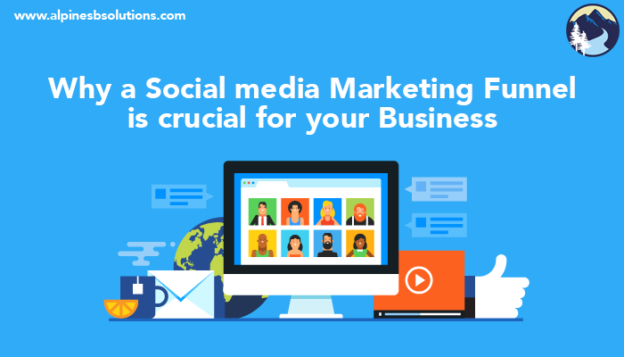
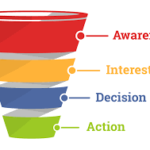 The “
The “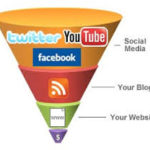 When you create a social media sales funnel, you supercharge your
When you create a social media sales funnel, you supercharge your 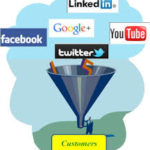 Once you know which channels to be on, you can work on generating that awareness. Facebook ads, for example, can help potential customers discover your page. When applicable, tag other organizations in your posts to help your posts show up on their followers’ pages. Cross promote your social channels through strategies like including the social links in your email signatures or newsletters.
Once you know which channels to be on, you can work on generating that awareness. Facebook ads, for example, can help potential customers discover your page. When applicable, tag other organizations in your posts to help your posts show up on their followers’ pages. Cross promote your social channels through strategies like including the social links in your email signatures or newsletters.
 Imposter syndrome is often confused with a few other things, so let’s clear that up right now. Imposter syndrome is not humility (which is an accurate view saying your worth isn’t more than someone else). Imposter syndrome is a warped and false view of your “lack” of
Imposter syndrome is often confused with a few other things, so let’s clear that up right now. Imposter syndrome is not humility (which is an accurate view saying your worth isn’t more than someone else). Imposter syndrome is a warped and false view of your “lack” of  It tells us we just got lucky. It wasn’t our hard work, talent, and ambition that got us that success. We just happened to be at the right place at the right time (which, by the way, is why you shouldn’t take a chance now because your luck may run out).
It tells us we just got lucky. It wasn’t our hard work, talent, and ambition that got us that success. We just happened to be at the right place at the right time (which, by the way, is why you shouldn’t take a chance now because your luck may run out). Don’t try to fix it with success. Sometimes people think the way to overcome imposter syndrome is to pursue more accomplishments. But, the underlying root of imposter syndrome is not being able to accurately internalize your own success and abilities. Simply piling on more success won’t do anything to make imposter syndrome go away.
Don’t try to fix it with success. Sometimes people think the way to overcome imposter syndrome is to pursue more accomplishments. But, the underlying root of imposter syndrome is not being able to accurately internalize your own success and abilities. Simply piling on more success won’t do anything to make imposter syndrome go away.